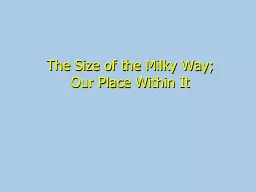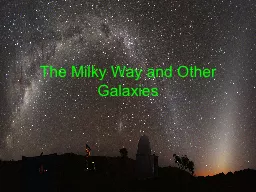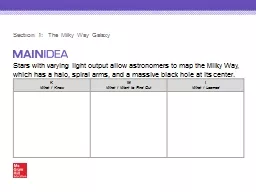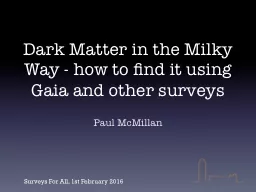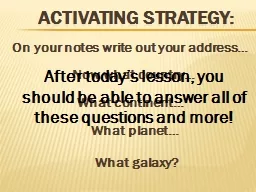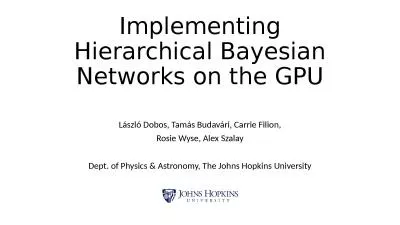PPT-The Size of the Milky Way;
Author : pasty-toler | Published Date : 2017-10-07
Our Place Within It The Visible Milky Way The Milky Way as Seen From Texas from Canada we can t see the Southern Cross The Obvious Questions How big is the Milky
Presentation Embed Code
Download Presentation
Download Presentation The PPT/PDF document "The Size of the Milky Way;" is the property of its rightful owner. Permission is granted to download and print the materials on this website for personal, non-commercial use only, and to display it on your personal computer provided you do not modify the materials and that you retain all copyright notices contained in the materials. By downloading content from our website, you accept the terms of this agreement.
The Size of the Milky Way;: Transcript
Download Rules Of Document
"The Size of the Milky Way;"The content belongs to its owner. You may download and print it for personal use, without modification, and keep all copyright notices. By downloading, you agree to these terms.
Related Documents

